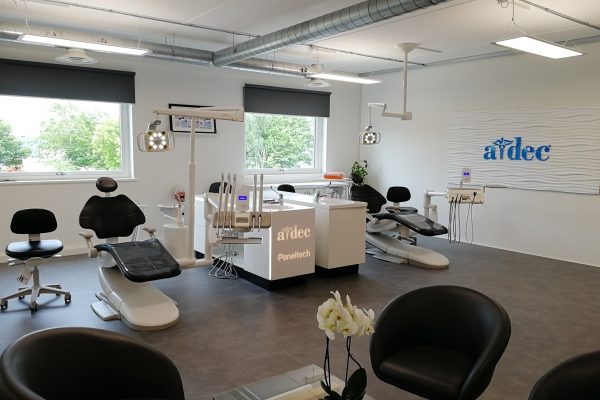
Is it time to purchase some new dental equipment? Justin Hind presents his top tips on how to make the right decision
Choosing dental equipment is one of the most important decisions you’ll make for your practice. Making the right choice can increase productivity and success, and it may also help you to perform healthier, more efficient dentistry.
Durability and reliability
When selecting dental equipment, check for durability and reliability. For an environment that’s subject to moisture and constant use, choose solid equipment that’s built to withstand the daily rigours of dentistry. Be sure to try these tests when you’re selecting your equipment:
- Touch each piece of equipment to get a feel for how well it’s made
- Operate the dental chairs by moving the armrest up and down. Adjust the headrest
- Sit down beside and behind the chair. Is it easy to position yourself close to the chair at each working position?
- Recline in the dental chair and experience the comfort
- Check the motion. Is it bumpy or smooth?
- Notice if the equipment feels sturdy
- Open and close the cabinets. Do they open and close smoothly?
- Check that all parts fit well together
- Test the function of the delivery system, chair and all components.
Performance and efficiency
The ultimate test of your equipment is how well it performs. Top-performing equipment keeps you operating at peak efficiency.
Every feature should have a specific purpose, with the ultimate goal of helping you and your team perform at your best. Each piece should be ergonomically designed not only for patient comfort, but also for yours. Consider these two major points when you’re trying to create a comfortable, efficient work environment:
- •Economy of motion: never move more than necessary. Design your environment to access what you need and keep what you use most often within reach. By eliminating time-wasting movements, such as overreaching for an instrument, twisting your body or craning your neck, you can complete procedures more efficiently and reduce your risk of injury
- Reduce fatigue: the more you move, the more energy you waste – the tenser your muscles, the less efficiently they operate. Through the years, the daily aches and pains of poor positioning accumulate and can lead to chronic injury, severely impacting your ability to practise dentistry.
Reputation and service
When your equipment isn’t working, you’re not working. Excessive maintenance can result in costly service calls and lost productivity. Select products that need the least amount of maintenance and service. Choose a manufacturer that has a history of creating innovative products that are durable, reliable and easy to maintain.
 Ask your peers for advice: what brand do they use? Would they buy that brand again? And who do they trust? Choose a manufacturer that stands by its products and will still be in business, and have readily available parts when it comes time for servicing or upgrading five, 10 or even 20 years down the road.
Ask your peers for advice: what brand do they use? Would they buy that brand again? And who do they trust? Choose a manufacturer that stands by its products and will still be in business, and have readily available parts when it comes time for servicing or upgrading five, 10 or even 20 years down the road.
If what you have is still operating (though outdated), you may be pondering the merits of investing in new equipment. There are some basic questions to ask yourself:
• Although your existing equipment may still be operating up to the standards at which it originally was manufactured, does it perform to today’s standards of dentistry? Does it have the features (such as seamless integration of electric motors, cameras or scalers) offered currently that weren’t available 10 years ago? If not, your productivity may be impaired
• Does your existing equipment require excessive maintenance and continued costly service calls? If it does, you’re losing productive hours in downtime – as well as money in repair costs
• Does your existing equipment look up to date? Clean, modern-looking equipment can instil confidence and trust that your dental techniques are equally up to date.
Value and pricing
If you approach purchasing equipment as a feature-for-feature (or pound-for-pound) experience, you may end up with a mismatch in terms of lasting quality and satisfaction. The whole is worth more than the sum of the parts.
How can you navigate the market and determine what to buy? Is there really a difference in quality? What value will this product give to your practice?
Guide your purchase decision by:
• Asking questions about product performance, reliability and durability
• Researching the manufacturer’s products, consistency and longevity in the marketplace
• Asking what differentiates a manufacturer’s products from the competition
• Learning about the partnership between the manufacturer and your full-service dealer. Do they have an established reputation for standing behind the product? What is their customer service record?
• Defining what you need and expect from your next dental equipment purchase.
Each of the points mentioned can be applied to all aspects of a treatment room’s purchase, whether a full surgery refit is required or a replacement stool. Consider these points when thinking about dental chairs, stools, delivery and assistant support systems, lights, monitor mounts and dental cabinetry.
Other topics – such as sterilisation and maintenance – can also be included in this analysis, since they greatly impact your workflow, productivity and treatment room procedures.
Use these points as a guide to determine which questions to ask and the issues to consider when you visit a dental show, a showroom or even a colleague’s surgery.
For more information about A-dec equipment or to try it out for yourself, visit the team on stand M50 at BDIA Showcase. Can’t make it to the show? Book a showroom appointment online at www.a-dec.co.uk/request-demo


